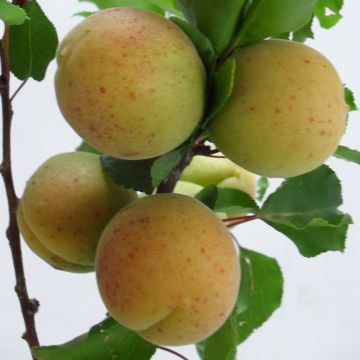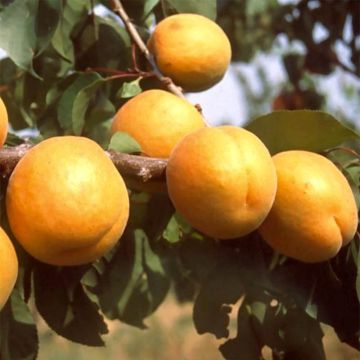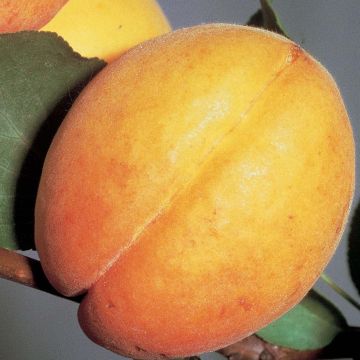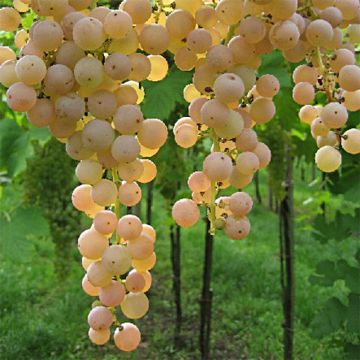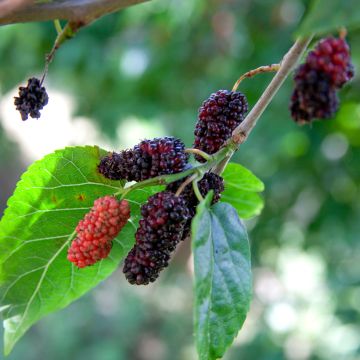

Prunus armeniaca Polonais - Apricot Tree
Prunus armeniaca Polonais - Apricot Tree
Prunus armeniaca Polonais
Apricot
This item cannot be shipped to the selected country
Oversize package delivery charge from €6.90
Oversize package delivery charge from €6.90
Oversize package delivery charge from €6.90
Oversize package delivery charge from €6.90
Delivery to Corse prohibited
More information
Schedule delivery date,
and select date in basket
This plant carries a 6 months recovery warranty
More information
We guarantee the quality of our plants for a full growing cycle, and will replace at our expense any plant that fails to recover under normal climatic and planting conditions.
Oversize package: home delivery by special carrier from €6.90 per order..
Express home delivery from €8.90.
Oversize package: home delivery by special carrier from €6.90 per order..
Express home delivery from €8.90.
Oversize package: home delivery by special carrier from €6.90 per order..
Express home delivery from €8.90.
Oversize package: home delivery by special carrier from €6.90 per order..
Express home delivery from €8.90.
Delivery to Corse prohibited: UE law prohibits the import of this plant from mainland France to Corse as part of the fight against Xylella fastidiosa. Please accept our sincere apologies.
More information
Description
The Polish Apricot Tree, sometimes called Provence Orange Tree, is a self-fertile and productive variety in its growing areas: Northeast regions, Rhône Valley, Ventoux, Nyons. This variety is very resistant to cold and has good disease tolerance. Its fruits are medium-sized, measuring 4 to 4.5 cm (2in) in diameter and weighing 40 to 60 g, with an oblong shape. Their skin is orange, overlaid with red. The base sometimes remains green even when ripe. The flesh is of very good taste; fine and melting, juicy and perfectly fragrant, with a slightly acidic taste. The fruits can be eaten fresh, prepared in syrup or made into jam. Harvest takes place at ripeness, during the first week of July.
The apricot tree originates from Central and Eastern Asia. It has been cultivated in China since 3,000 BC. The apricot tree we cultivate (Prunus armeniaca) was introduced to the Mediterranean basin from Armenia, hence its name, at the beginning of the Christian era. Its introduction to France took place during the Renaissance. The Polish Apricot Tree is a very old variety, whose name probably comes from the Polish king Stanislas 1st Leszczynoski, Duke of Lorraine, a great enthusiast of the variety. Its first registration dates back to 1961.
Thanks to its semi-late flowering, which avoids late winter frosts, the Polish Apricot Tree is adapted to colder regions. It can withstand temperatures as low as -30°C (-22°F). A sunny location, protected from winds and facing south, will still improve fruiting. It only bears abundant fruit in its growing areas: Northeast regions, Rhône Valley, Ventoux, Nyons. It is not suitable for Mediterranean climates.
This variety has a semi-erect to semi-spreading habit, indicating a slender and tall tree, with spaced foliage and branches that grow vertically for some and horizontally for others. The leaves are toothed, heart-shaped, and have long petioles. It can reach up to 6 m (20ft) in height with a diameter of 4 m (13ft). It starts producing at 3 years old and becomes fully mature at 7 years old.
The flowering of the apricot tree occurs in late March, before the leaves appear. The flowers are borne on the previous year's branches. The flower has 5 pink petals and purple sepals. It is fragrant but lasts only a short time. Fruit ripening occurs in early July.
The Polish Apricot Tree is self-fertile. It does not require the presence of another apricot tree for pollination.
Apricots are consumed fresh, dried, or prepared in various ways: jams, pies, compotes, apricots in syrup. They are also found in savory dishes such as rabbit with apricots and parsnips, an English recipe. Apricot juices are often mixed with a touch of peach juice to balance the natural acidity of apricots.
Report an error about the product description
Prunus armeniaca Polonais - Apricot Tree in pictures
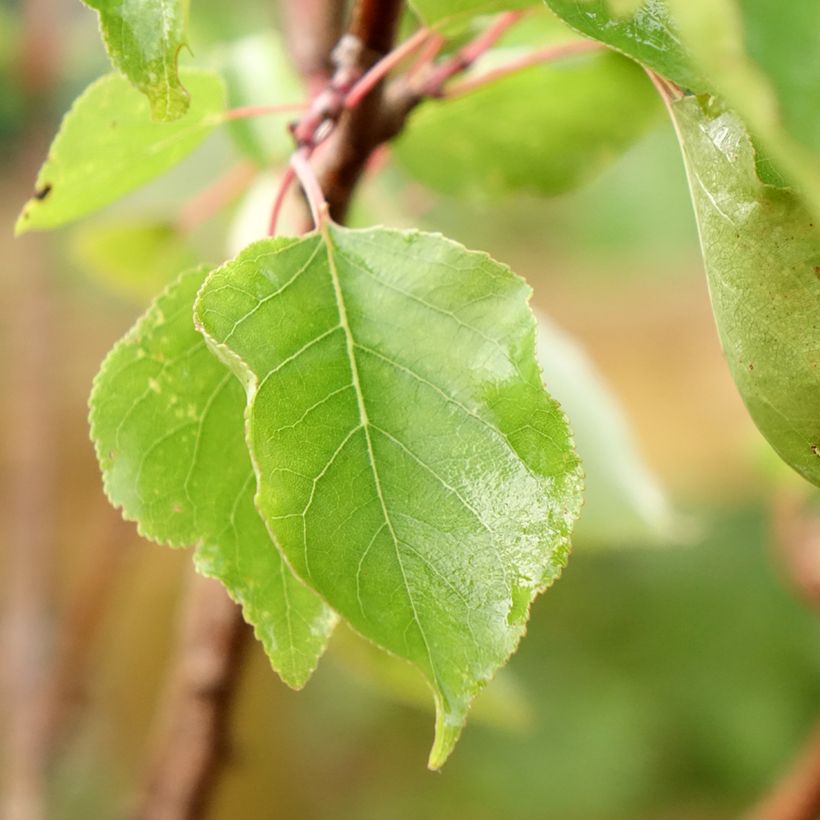

Plant habit
Fruit
Flowering
Foliage
Botanical data
Prunus
armeniaca
Polonais
Rosaceae
Apricot
Western Europe
Pêcher franc (Bare root - Scion, Bare root - Spindle)
Other Apricot trees
Planting and care
Planting preferably takes place in early winter, when the tree is in its vegetative rest period and before frost sets in. To plant multiple apricot trees, space them at least 1.5 m (5ft) apart. Dig a hole two to three weeks before planting, twice as wide and deep as the pot. On the day of planting, place the tree with its pot in a basin of water, in order to moisten the entire root ball through capillary action. Add compost to the bottom of the hole. Place the tree in the hole, fill with soil mixed with compost. Firmly pack the soil at the base. The root ball should be completely covered. Water generously.
The Polish Apricot Tree is not very demanding in terms of soil type. It ideally thrives in rich and light, cool, and above all well-drained soil: it cannot tolerate stagnant water. Plant it in a sunny location, sheltered from the North and East winds.
Planting period
Intended location
Care
-
, onOrder confirmed
Reply from on Promesse de fleurs
Mediterranean fruit trees
Haven't found what you were looking for?
Hardiness is the lowest winter temperature a plant can endure without suffering serious damage or even dying. However, hardiness is affected by location (a sheltered area, such as a patio), protection (winter cover) and soil type (hardiness is improved by well-drained soil).

Photo Sharing Terms & Conditions
In order to encourage gardeners to interact and share their experiences, Promesse de fleurs offers various media enabling content to be uploaded onto its Site - in particular via the ‘Photo sharing’ module.
The User agrees to refrain from:
- Posting any content that is illegal, prejudicial, insulting, racist, inciteful to hatred, revisionist, contrary to public decency, that infringes on privacy or on the privacy rights of third parties, in particular the publicity rights of persons and goods, intellectual property rights, or the right to privacy.
- Submitting content on behalf of a third party;
- Impersonate the identity of a third party and/or publish any personal information about a third party;
In general, the User undertakes to refrain from any unethical behaviour.
All Content (in particular text, comments, files, images, photos, videos, creative works, etc.), which may be subject to property or intellectual property rights, image or other private rights, shall remain the property of the User, subject to the limited rights granted by the terms of the licence granted by Promesse de fleurs as stated below. Users are at liberty to publish or not to publish such Content on the Site, notably via the ‘Photo Sharing’ facility, and accept that this Content shall be made public and freely accessible, notably on the Internet.
Users further acknowledge, undertake to have ,and guarantee that they hold all necessary rights and permissions to publish such material on the Site, in particular with regard to the legislation in force pertaining to any privacy, property, intellectual property, image, or contractual rights, or rights of any other nature. By publishing such Content on the Site, Users acknowledge accepting full liability as publishers of the Content within the meaning of the law, and grant Promesse de fleurs, free of charge, an inclusive, worldwide licence for the said Content for the entire duration of its publication, including all reproduction, representation, up/downloading, displaying, performing, transmission, and storage rights.
Users also grant permission for their name to be linked to the Content and accept that this link may not always be made available.
By engaging in posting material, Users consent to their Content becoming automatically accessible on the Internet, in particular on other sites and/or blogs and/or web pages of the Promesse de fleurs site, including in particular social pages and the Promesse de fleurs catalogue.
Users may secure the removal of entrusted content free of charge by issuing a simple request via our contact form.
The flowering period indicated on our website applies to countries and regions located in USDA zone 8 (France, the United Kingdom, Ireland, the Netherlands, etc.)
It will vary according to where you live:
- In zones 9 to 10 (Italy, Spain, Greece, etc.), flowering will occur about 2 to 4 weeks earlier.
- In zones 6 to 7 (Germany, Poland, Slovenia, and lower mountainous regions), flowering will be delayed by 2 to 3 weeks.
- In zone 5 (Central Europe, Scandinavia), blooming will be delayed by 3 to 5 weeks.
In temperate climates, pruning of spring-flowering shrubs (forsythia, spireas, etc.) should be done just after flowering.
Pruning of summer-flowering shrubs (Indian Lilac, Perovskia, etc.) can be done in winter or spring.
In cold regions as well as with frost-sensitive plants, avoid pruning too early when severe frosts may still occur.
The planting period indicated on our website applies to countries and regions located in USDA zone 8 (France, United Kingdom, Ireland, Netherlands).
It will vary according to where you live:
- In Mediterranean zones (Marseille, Madrid, Milan, etc.), autumn and winter are the best planting periods.
- In continental zones (Strasbourg, Munich, Vienna, etc.), delay planting by 2 to 3 weeks in spring and bring it forward by 2 to 4 weeks in autumn.
- In mountainous regions (the Alps, Pyrenees, Carpathians, etc.), it is best to plant in late spring (May-June) or late summer (August-September).
The harvesting period indicated on our website applies to countries and regions in USDA zone 8 (France, England, Ireland, the Netherlands).
In colder areas (Scandinavia, Poland, Austria...) fruit and vegetable harvests are likely to be delayed by 3-4 weeks.
In warmer areas (Italy, Spain, Greece, etc.), harvesting will probably take place earlier, depending on weather conditions.
The sowing periods indicated on our website apply to countries and regions within USDA Zone 8 (France, UK, Ireland, Netherlands).
In colder areas (Scandinavia, Poland, Austria...), delay any outdoor sowing by 3-4 weeks, or sow under glass.
In warmer climes (Italy, Spain, Greece, etc.), bring outdoor sowing forward by a few weeks.



































